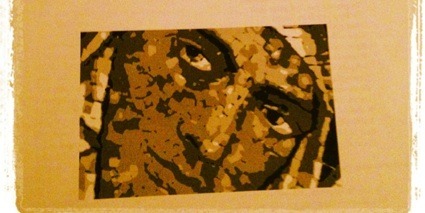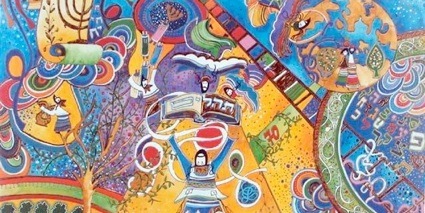Monette Chilson's Blog, page 4
October 18, 2013
Making Time for Rest
 This past Saturday I helped lead a half-day spiritual spa experience at our church. Watching folks navigate their morning respite at the Agape Life Spa, I felt like I had found my calling. Found a ministry that I was passionate about. One that didn’t require proselytizing or convincing. One that called people gently into the peace that defies all understanding. I began to sense how very much people long for this rest. And how much they resist it in the name of productivity and responsibility. It became clear that somewhere along the line we began to think of rest as synonymous with slovenliness rather than as a necessary state for communion with the divine.
This past Saturday I helped lead a half-day spiritual spa experience at our church. Watching folks navigate their morning respite at the Agape Life Spa, I felt like I had found my calling. Found a ministry that I was passionate about. One that didn’t require proselytizing or convincing. One that called people gently into the peace that defies all understanding. I began to sense how very much people long for this rest. And how much they resist it in the name of productivity and responsibility. It became clear that somewhere along the line we began to think of rest as synonymous with slovenliness rather than as a necessary state for communion with the divine.But a half-day retreat is, well, a treat—not an everyday kind of experience. So I began to ponder simple practices that could bring the necessary dose of rest into our everyday lives. There were many that came to mind immediately—yoga, meditation and breathing, to name a few. But there were, surely, more to be discovered.
My discovery began the next morning when I arrived a few minutes late to a contemplative service and my friend Jerry Webber was explaining that we were going to try something new. Experimenting with bell prayer, we would stop whatever we were doing during the morning’s service—singing, communion, speaking—and enter into a time of sacred silence. The times were not scheduled or predictable. The anonymous bell-ringer chimed seemingly at random. Each time, we pulled away from the business at hand and refocused our attention on a divine presence. It was surprisingly difficult to relinquish the illusion of control we have over our time.
It reminded me of a more predictable version of intentional stillness that is practiced every single day at precisely 2:00 at my daughter’s school. They call it “espacio,” a Spanish word meaning space. Espacio is a special meditative time during the school day to silently listen for God’s voice in quiet rumination. It reflects the school’s belief that a contemplative life provides necessary structure in which to be still in order to reflect and pray. It requires the same uncharacteristic mid-task pulling away that the bell prayer required. It is surreal to be on campus and to observe the student chatter taper off suddenly, teachers stop their explanations, athletes break their stride and administrators fall silent no matter the importance of the meeting they’re conducting. It is a universal acknowledgement that there is always something more important than the task at hand.
Just before writing this, I happened upon a giant dragonfly, half a foot across, struggling to right itself on our patio. As it flailed on its back, I watched his chest rise and fall, realizing that I’d never witnessed the inhales and exhales of such an incandescent creature. As I helped it to its feet and watched it fly away, I remembered the symbolism of the dragonfly who flies for only a small fraction of its life, taking full advantage of each moment to soar. To be present. And I realized that just the simple act of stopping to watch this small miracle had been a moment of rest and reflection for me. A beautiful, unscheduled glimpse into the realm where life and God intersect, speaking to me in one voice. I was so glad I was listening.
Published on October 18, 2013 22:00
October 3, 2013
Moving Beyond Labels
 There are blog posts that we want to write and there are those that won’t stop their incessant tapping on our brains or our hearts until we write them. This is the latter. Read on now that you’ve gotten my little disclaimer.
There are blog posts that we want to write and there are those that won’t stop their incessant tapping on our brains or our hearts until we write them. This is the latter. Read on now that you’ve gotten my little disclaimer.What with the government shutting down and all, there is plenty of partisan speak in the air and on the airwaves. Hearing the verbal barbs has made me grateful that long ago I stopped affiliating myself with any particular political ideology. I was tired of the baggage and assumptions that came with being a card-carrying member of either party. Instead of dubbing one good and the other evil, I began to see that—like the humans who run them—they are each a mixed bag of good, evil and everything in between. I found worthy candidates in both. I decided I didn’t want to limit my vision to the options that were amenable to the leaders of only one group. So I didn’t.
Still, there is another card I’ve carried with me all these years. Whether waving it about for all to see or hiding it deep within my pocket, I’ve been a card-carrying Christian all my life. Though I’ve done my fair share to denomination hopping, I’ve never turned in the Christian card—even when I doubted. Even when I was disappointed or offended by an act of hypocrisy or injustice within the church. But lately I’ve actually pulled that card out and thought about setting it down. Leaving it on a table and walking away.
Not because I had a miraculous conversion to another religion or an aversion to the truths that Jesus embodied, but simply because the label feels suddenly oppressive and heavier than I ever remember it feeling before. Because it has occurred to me that maybe it does no one any good for me to adopt a title that announces my religious affiliation to the world. In fact, maybe it actually does harm to me and to others who, by default, become the “outsider” to my “insider” status if they have chosen a different path. My allegiance lies, not with any humanistic construction or organization of spiritual truths, but with the truths themselves. Not with just the scripture that was canonized by a select group of humans, but with all sacred scripture.
Why are we so drawn to labels—to the neat little categories that help us make sense of the world? That reduce the rainbow of humanity to easily checked boxes? Why does it matter? Maybe the mystery is too much for us—the cloud of unknowing too frightening. Instead of experiencing God we theorize, postulate, prove and argue our way into a faith that makes sense. But if it makes sense—if it’s all demystified via our intellect—is it really faith?
Looking at the brightly colored “Coexist” logo, I am struck by the fact that some of the people with whom I find the greatest spiritual affinity are not Christians. Sprinkled liberally among the Jesus followers in my life are Buddhists, Muslims, Jews, atheists and agnostics. And coexist doesn’t adequately express the way I hope to live alongside them. I don’t want to just “live separately and independently but peaceably,” the connotation of coexistence. I want to learn from their unique experience without ever insisting or insinuating that my way is better. I want to walk beside them, without having that nagging evangelistic thought I should be dragging them along my own path.
So just for today, I am setting down that well-worn card. I am walking away from its label and toward those in my life that embody the grace and truth I want to embody. Maybe I’ll replace it with one that reads, “God bless everyone—no exceptions.”
Namaste.
Want to explore these ideas further? Read more about using yoga as a tool to experience the divine in ways that go beyond the intellect in my book, Sophia Rising Awakening Your Sacred Wisdom Through Yoga.
Published on October 03, 2013 11:37
September 21, 2013
Playing by the Rules
 Yoga is not known for its rules. We yogis are, by-and-large, free-flowing folks. We are in tune with our bodies, minds and spirits and we are able to tap into that wisdom more easily than most. Why is that? Perhaps, partly, because there are principles, more often lived than spoken, that guide us—on and off the mat. The very first limbs of yoga (the yama and niyama) articulate these moral guideposts—the “dos” and “don’ts,” if you will. They are the unspoken rules of yoga.
Yoga is not known for its rules. We yogis are, by-and-large, free-flowing folks. We are in tune with our bodies, minds and spirits and we are able to tap into that wisdom more easily than most. Why is that? Perhaps, partly, because there are principles, more often lived than spoken, that guide us—on and off the mat. The very first limbs of yoga (the yama and niyama) articulate these moral guideposts—the “dos” and “don’ts,” if you will. They are the unspoken rules of yoga.These universal truths align with all faith traditions, enhancing one’s religious experience, rather than conflicting with it. In fact, each of the yama and niyama are contained within the Judeo-Christian moral compass, the Ten Commandments. They are also found sprinkled throughout the Qur’an and are implicit in Buddhism’s Eight Fold Path. Let’s take a look.
The “don’ts” (yama) The “dos” (niyama)
Ahimsa: nonviolence Saucha: purity Satya: non-lying Santosha: contentment Asteya: non-stealing Tapas: austerity Brahmacharya: sensual restraint Svadhyaya: study Aparigraha: non-covetousness Ishvara pranidhana: surrender to God
One of the ways Western religion often falls short in encouraging us to live our spiritual truths is its lack of kinesthetic engagement. We talk about faith. We listen to sermons on it. We read about it. We may even write about it in our journals. But we struggle with ways to engage it physically—to wrap our hands around it. Yoga gives us postures, breathing, a mandate and a mat on which to sit in stillness and see what God has for us that day. Similarly, prayer beads—used by every major world religion—give us, in the most literal sense, a faith we can hold onto. You can read more on prayer bead practices (and enter to win a copy of my book!) in this excerpt from Sophia Rising: Awakening Your Sacred Wisdom Through Yoga on Boho Daily:
http://www.bohodaily.com/2013/09/a-faith-to-hold-onto/.
Today, I’d like to offer you an opportunity to think about which of the yama and niyama you are being called to focus on in your own life. As an additional encouragement, I’m partnering with Tiny Devotions, makers of mala beads and other inspiring jewelry, to give away a niyama-inspired bracelet from their new Niyamas Collection. Thus far, they’re offering designs based on four of the niyama. Peruse the designs, ponder the intentions of each, and decide which one’s speaking to you. Comment on which one it is and why. Click on the Rafflecopter entry button, and you’ll be entered to win the bracelet of your choice. You can engage on Twitter for extra entries. The contest is open through Monday, September 23 (11:59 p.m. Eastern time). Happy pondering.
Santosha Tassel Bracelet: Happiness, Intuition, Possibility
Saucha Tassel Bracelet: Joy, Life, Purity
Svadhyaya Tassel Bracelet: Centering, Self Love, Self-Reflection
Tapas Tassel Bracelet: Austerity, Focus, Goals
Published on September 21, 2013 09:22
September 4, 2013
Beyond the Man in White Robes: Finding a Girl God

“God may be in the details, but the goddess is in the questions.
Once we begin to ask them, there’s no turning back.” - Gloria Steinam
One of the greatest harms we have inflicted upon our souls stems from our our denial of the feminine face of God. By making God into a bearded, robed patriarch (even if only in our mind’s eye), we have lost the ability to recognize what my friend Trista Hendren beautifully and simply calls, “The Girl God.”
On my own spiritual journey, I was deeply wounded by an exclusively male image of the divine. And it started when I was a child. A child looking for answers to questions I didn’t even have the words to ask. Thankfully, in her book The Girl God, Trista provides not only those words but has collaborated with artist Elisabeth Slettnes to give us images that sometimes answer our questions even more deeply than words can.
Though written as a children’s book and inspired by conversations with her own young daughter, this vibrantly illustrated book will speak to women of all ages. Maybe even some men who dare to acknowledge there is a part of God not found in the “he-ness” to which God’s been restricted in our modern world.
In The Girl God, Trista reminds us, as she explains to her daughter, that “In the beginning, God was a woman.” With child-friendly simplicity and a beautiful interfaith approach, she tells young Helani that “in Hebrew, there is no gender for God, but when the Bible was translated to English, God became a man.” Bringing in her Islamic faith, she writes of fifty volumes of newly discovered works by female scholars that are now being published, asking her daughter,” Can you imagine how much of our religion would change if we heard it through the mouths of women instead of only men?” When I imagine it, my heart soars in anticipation of a long-awaited wholeness that seems to fill my entire being.
The mother-daughter dialog is the thread on which we are carried through the book, but there are quotes sprinkled on nearly every page that are every bit as powerful as the story being told. From sources as diverse as Kabir, Sojourner Truth, Gloria Steinam, Prophet Muhammed, the Bible (Isaiah) and Georgia O’Keefe, these wisdom-filled snippets ground the story in the bigger quest each of us is on to recognize the God inside us.
The Girl God’s greatest contribution is its ability to help tear down one of the barriers to this divine connection. To silence that voice that says if we listen to our deeply sacred feminine wisdom, we are not listening to the “real” God. Read this book to your daughters and your grand daughters, and perhaps they will never doubt the validity of their inner voice. Read it to yourself to remind you of your own. Read it and weep. Read it and heal. Read it and smile with the relief that someone finally had the courage to tell our girls that God is not just for their brothers and their fathers. Walk away knowing that the God of Abraham, Isaac and Jacob is equally the God of Sarah, Rebekah and Rachel. But most importantly, walk away knowing there is a Girl God inside you too.
“The world of humanity has two wings—one is women and the other men. Not until both wings are equally developed can the bird fly. Should one wing remain weak, flight is impossible.”
-Abdu’l-baha
I am giving away a copy of The Girl God, written by Trista Hendren and illustrated by Elisabeth Slettnes, to one lucky winner. Use the Rafflecopter entry form below or email me at Monette@SophiaRisingYoga.com if you have problems with it! Contest is open through midnight Thursday, September 12. Good luck!
Trista Hendren is a Certified Facilitator-Coach with Imagine a Woman International. She lives between Portland, Oregon with her children and Bergen, Norway with her husband. You can read more about The Girl God book and her other projects at www.thegirlgod.com. Look for her new book, Mother Earth, coming soon! Find her on Twitter @TheGirlGodBook.
Published on September 04, 2013 22:00
August 13, 2013
Vacation Takeaways
 My friend Bob challenged his staff to do more with their summer vacations than get away and return to the same old ruts. When he shared this with me, I decided to do the same. Per the exercise, I spent the last day of my six-week mountain sojourn reflecting on what I’d leave behind when I returned home—what didn’t serve me any longer or what was unnecessarily cluttering my life. I also looked for perspective and aha moments that I wanted to take back with me and pull out when the hum of real life threatened to drown out the voice of authenticity that speaks more clearly in the space created by time away.
My friend Bob challenged his staff to do more with their summer vacations than get away and return to the same old ruts. When he shared this with me, I decided to do the same. Per the exercise, I spent the last day of my six-week mountain sojourn reflecting on what I’d leave behind when I returned home—what didn’t serve me any longer or what was unnecessarily cluttering my life. I also looked for perspective and aha moments that I wanted to take back with me and pull out when the hum of real life threatened to drown out the voice of authenticity that speaks more clearly in the space created by time away. ESCAPE THE CONCRETE
What I discovered is that in retreating to the the mountains, I had escaped the concrete in more than just the literal sense. Things in my “real life” back in Houston are often quite set in stone. Life moves at a regimented pace, necessitated by school days, activities, meetings and all the cogs that keep life as we know it chugging along. Businesses open and close at times that are easily ascertained by a quick google of a web site. In my mountain village, life is very different.
When I wondered how late the local frozen yogurt shop would be open, I called and asked. Instead of getting a cut-and-dried answer, I got, “When were you planning on coming by?” Quickly recalibrating, I sputtered, “ Oh about 8 o’clock.” The friendly voice on the other end of the line proffered, “We’ll be waiting for you.” And they were. Same scenario during a string of rainy days a few days later. With the 10-year-old’s indoor entertainment options exhausted, I agreed to go by the toy store for a game. When I called, the owner chirped that she wouldn’t close until we had our game. Sure enough, while I was waiting in line with other clearly beleaguered parents, she asked if one of us had called earlier. Seeing my hand shoot up, she sighed, “Whew! I can close as soon as you’re done.” Closing time was not about a number on a clock but about honoring a personal commitment.
EMBRACE YOUR ISH-NESS
There is a flexibility built into life there that I miss when I’m back in the city—an “ish-ness” that provides grace around the “have to’s” and “musts.” On my way to a rare professional engagement during my mountain time—a talk at the local yoga studio—I was in concrete mode without realizing it. I was annoyed that the lady at the office supply store didn’t arrive to print my notes until 9:15 instead when the hours on the front door clearly indicated a 9 a.m. opening. She had said “9-ish” when I asked about the store’s opening, but my ears had conveniently skipped over the “ish” and heard 9—set in stone (do not pass go; do not collect $200).
CONNECT FACE-TO-FACE
As I was spending one of my last days in the mountains trying to track down a local sculptor to turn dead tree in our yard into a work of art, I learned one final lesson on the beauty of interconnection that transcends the limits of the wide world of the web upon which we’ve become so dependent. There really is no way to find such a person with the click of a mouse. Instead, I started at a wood carving shop on Main Street. Or I tried to. As I was knocking on his shop door, a neighbor poked his head out and said that if Robin wasn’t in the studio, he’d be at the sunglass shop he runs next to Buck’s (the local coffee house).
Heading to the sunglass shop via Buck’s, I did, indeed, track down Robin who informed me that he really couldn’t do a large on-site project like that. I’d need to talk to Tree for that. “Hmmm... Tree? Does he have any other name?” I asked, thinking how foolish I was going to feel looking for Tree in the phone book or on the web. “Well, I’m sure he does, but no one knows what it is.” I must have looked at a loss, because he pointed me down the street saying, “Sometimes you can find him at that motel.” “The one with the cafe?” I queried. “Nope, past that one. They’ll know where to find him.”
“OK then,” my incredulous city girl brain thought, and I headed down the street. Feeling more than a little silly, I arrived at the front desk, cleared my throat and asked if she knew where I might find Tree. With not an ounce of compunction, she smiled and said, “Room 37.” No worries that I might be an ax murderer, apparently. When I didn’t immediately charge in that direction, she offered, “I know he’s in there because he just came down to see if we’d put out the wine yet.” Thanking her, I told her I wasn’t quite comfortable going up to his room unannounced. Baffled by the decorum but ever-accommodating, she said she’d call up at tell him he had a guest.
What followed was the most rambling business (and I use that word loosely) meeting I’ve ever attended. Turns out I am not the first to circuitously track down this world-renowned tree artist. Between showing me snapshots of him and Willie Nelson, ignoring multiple texts from John McEnroe (his partner in a chain of restaurants aptly dubbed Treehouse) and scrolling by George Clooney’s contact info as we looked for photos of his work on his vintage flip phone, he regaled me with tales of his particular brand of alchemy—turning arbors into art.
Half an hour later I left with photocopies of several projects, Tree’s number hastily scribbled in the corner. So now, back in the big city, I can pick up the phone and call him, asking him to work his magic on our dead tree. What I really want to hang onto, though, is the sense of wonder I discovered that day in the mountains. The knowing that by making one face-to-face personal connection—even if it takes me out of my comfort zone—I could make another, completely unaided by technology (flip phone slideshow aside). I want to embody some of that “ish-ness” that took the pressure of life down a few notches. To give and receive that grace that says it’s OK to live life on a schedule that’s a little less rigid than the one to which I’m accustomed.
I can’t bring the cool temperatures or the smoky vistas home with me. But if you ask me something, and I add “ish” to my answer, you’ll know I’m trying to live in that sweet spot I found this summer.
Published on August 13, 2013 13:06
June 10, 2013
Goodbye Comfort Zone
 Summer.
Summer. It’s that time of year when rules and dress codes relax. Even decades beyond school age, we feel as though the disciplinarians that normally keep us in line are looking the other way for a few months. As adults, we are often kept on that well-worn, responsible path by our own inner voice—its timbre a collection of tones and inflections collected over our lifetime. Some kind and loving. Some not so much.
This season offers you the opportunity to give your unhelpful inner teachers a well-deserved vacation. Bid them good-bye, and take your practice in a new direction. If your inner teachers are telling you that you aren’t strong enough, prove them wrong by practicing a strengthening pose every single day. Flip up into handstand and watch them gape, amazed. After three months of this, you will be strong.
Does one of those teachers tell you that your never be a back-bender and you better stick to your forward-bending forte? I have one who says that. Find a backbend—starting as gently and propped as needed—and prove to yourself that you can open your heart without sending yourself spiraling out of control.
Pick a pose that bothers you and explore why that might be. You just might discover something about your inner self that is being reflected back at you through your physical body.
This summer, stop internalizing the world around you. Spend some time in the yogic niyama of self-study (svadhyaya) In my book, Sophia Rising: Awakening Your Sacred Wisdom Through Yoga, I describe it like this:
“Leave behind the belief that to study means to seek external knowledge and claim it for our own. Limiting the search for truth to outside sources—books, the Internet, sermons, lectures, others’ opinions—can be dangerous territory. The most important study we can ever do is internal. It is also precisely the work that we often try to avoid. It is so much easier to absorb from the environment than to explore the landscape of the soul."
51).
This in this season synonymous with grand adventures, become an explorer of your own soul’s landscape. Meander, and push your edge. Strive for new heights, then honor your discoveries with some restorative poses. Find out what you’ve been avoiding, and find the strength to face it. That work will remain with you long after the lazy days of summer have given way to the dictates of the rest of the year. And you might even find that some of those inner teachers softened their criticism over the summer break!
Published on June 10, 2013 19:39
April 29, 2013
Dance on Your Edge
 I could have chosen a photo of one of the jaw-dropping flowers my husband’s grown in our yard, but that would be too cliche, too obvious. How many times are we told to stop and smell the roses? Flowers are natural attention-grabbers, after all, as they beckon to us clamoring, “Look at me! Smell me! Touch me!” Their vibrant colors scream, “Pay attention to me!” Mushrooms? Not so much. In fact, we shy away from them because we don’t know if they are friend or foe. Poisonous or palatable.
I could have chosen a photo of one of the jaw-dropping flowers my husband’s grown in our yard, but that would be too cliche, too obvious. How many times are we told to stop and smell the roses? Flowers are natural attention-grabbers, after all, as they beckon to us clamoring, “Look at me! Smell me! Touch me!” Their vibrant colors scream, “Pay attention to me!” Mushrooms? Not so much. In fact, we shy away from them because we don’t know if they are friend or foe. Poisonous or palatable.It occurs to me that mushrooms aren’t the only triggers for such ambivalence in us. We avoid ambiguous places in our lives that call to us yet leave us befuddled. What to do with them? Make peace with them or deny them? That place, my friend, is exactly where your yoga practice starts.
If you are thinking of yoga as a series of poses done on a mat, you are a little confused by all this mushroom talk. If you can think of the physical side of yoga as a teacher for life off the mat, you will be ready to go hunting for your inner shrooms. We learn about those sticky spots in our anatomy by observing our body’s response to different postures. We work through them, mindfully, dancing on the edge, as one of my favorite yoga teachers says. Our emotional life requires no less work and the same quiet attention. When a feeling arises that leads to consternation, rather than turn away, go into it—dance on its edge.
Doing just this is what lead me to the mushroom-turned-blog-fodder pictured above. I was feeling out of balance in that way that all parents will recognize—like the part of me that is mom (or maybe dad for you) was overshadowing all the other equally fascinating facets of myself. I felt myself being pulled this way and that by the demands of parenting which threatened to overwhelm me. I felt the me-beyond-the-mom floundering and struggling.
Rather than succumb to the Calgon-take-me-away escape route (tempting!), I closed my eyes and recalled the purest moments of connectedness with my children. I knew that even though I wanted to hole away with my computer and get my non-parental work done, I needed to get outside with them and see what Sophia would reveal. So I went into that uncomfortable place. Rather than denying it or running away from it, I took it by the hand (along with my nine-year-old) and walked with it out into the wide world, letting the experience heal this discontent brewing in my soul. We saw mushrooms as big as our faces, blossoms that come before berries, lizards that vanished like mirages as we reached for them.
Going into my discomfort instead of running away was right for me that day. It gave me perspective I couldn’t conjure myself and reminded me of the parts of parenting that feed my soul in ways nothing else does. As you find your own edge and learn to dance on it, I would love for you to share your stories from the dance floor in the comments section below.
Published on April 29, 2013 22:00
April 7, 2013
Remembering Her
 With the celebration of Easter a week behind us, I am still reflecting on a powerful service I attended on Holy Saturday. Easter in Memory of Her, conceived and written by Betty Adam and April DeConick, walks through Jesus’ last hours with women whose lives were impacted by him—Mary the Mother, Woman-at-the-Well, Woman-with-Nard, Mary of Bethany and Mary Magdalene.
With the celebration of Easter a week behind us, I am still reflecting on a powerful service I attended on Holy Saturday. Easter in Memory of Her, conceived and written by Betty Adam and April DeConick, walks through Jesus’ last hours with women whose lives were impacted by him—Mary the Mother, Woman-at-the-Well, Woman-with-Nard, Mary of Bethany and Mary Magdalene. A video of the performance is included below. It is an hour long, and I know that’s a big commitment in our fast-paced world. Following a brief introduction, the piece is broken up into five acts and that easily be viewed one at a time in ten-minute blocks. In fact, this might be the best way to digest the individual stories, providing time to linger and absorb the emotions contained within each woman’s unique relationship to Christ. Each act includes a verse of scripture read by the narrator, a monologue by one of the women depicting her experience of the crucifixion, and a short meditative song.
I knew I loved the concept of this service before I ever entered the quiet beauty of the historic Gothic sanctuary of downtown Houston’s Christ Church Cathedral. What I didn’t know was that it would feel as if I were hearing this pivotal part of Jesus’ story for the first time. Then it struck me that it was the very first time I had heard any part of this Easter narrative from a woman’s perspective. This grand theological and liturgical omission shouldn’t have been surprising to me, as I’ve long been aware of it, but it still felt deeply jarring as its rectification played out before me. Hearing the rest of the story at long last felt monumental. I was awed by the sudden inclusion in the resurrection narrative.
I talk and write about the problem of the marginalization of women’s voices and representation in scripture, once going so far as to do a linguistic analysis of the Bible which revealed a staggering disparity between the frequency of male and female pronouns (5,386 uses of “his” compared to 46 of “hers”). I know my ability to internalize the gospel has been hindered by this exclusionary language—this obstructed view that allows us to see only half of the whole. In fact, I believe that every woman is affected by this linguistic imbalance, even if they deny any slight exists. I wasn’t prepared for the emotional release I experienced from seeing Jesus through female eyes. It is not exaggerating to say that it was like seeing him for the first time.
I hope you will spend a few minutes today—and maybe a few minutes each day this week—taking in these women’s stories to see how they intersect with your own. Which woman has a relationship with Jesus that speaks to you at this juncture in your life? What did you learn about your own approach to hardship and seemingly hopeless situations as you put yourself in each woman’s shoes during her darkest hours?
As you ponder those thoughts, I want to leave you with a hope-filled story of one young woman who, at the tender age of 14, has already found where faith and action intersect in her life. Dance is her mission, and she uses it beautifully to speak out for the oppressed and to spread a joy that surpasses all understanding. To find out how you can support her efforts as she nears the end of her fundraising campaign, click on her photo below to go to a video she created to tell her story.
Then go out and tell your own. As Oscar Wilde so wisely quipped, “Be yourself; everyone else is already taken.” To be yourself, alas, you must know who you are. And to truly know yourself, you must remember those who came before, who prepared your way. Remember her. Remember him. Remember all.
Published on April 07, 2013 22:00
March 30, 2013
Passover, Yoga & Freedom
 Today’s guest post comes from my new friend and fellow melder of faith and yoga, Shalom Isaacson. One of my goals with this blog has always been to show people that yoga is a discipline which can deepen our spiritual experience, regardless of the religion we practice. To that end, Shalom has drawn parallels between the freedom found in a yoga practice and the freedom celebrated during this season of Passover within the Jewish tradition. Welcome, Shalom!
Today’s guest post comes from my new friend and fellow melder of faith and yoga, Shalom Isaacson. One of my goals with this blog has always been to show people that yoga is a discipline which can deepen our spiritual experience, regardless of the religion we practice. To that end, Shalom has drawn parallels between the freedom found in a yoga practice and the freedom celebrated during this season of Passover within the Jewish tradition. Welcome, Shalom!Volunteering at the Texas Yoga Conference provided me the pleasure of meeting Monette Chilson. Immediately recognizing our shared passion for uniting yoga practice with faith teachings, I was inspired to write a guest post on Passover, Yoga, and Freedom. Thank you Monette for the opportunity to share with your audience.
Slavery
On Passover, Jews around the world sit together and say, "I was a slave in Egypt." You can check my passport; there are no Egypt stamps and I've certainly never been a slave. So what is going on here? Is this just a game Jewish people play?
It is comforting to believe we are in complete control. Really though, we are all slaves to something. Its not just physical confinement; there can be a mental aspect too, and we all have "slave masters." Maybe it is working on a house? Fixing a car? A career that owns and consumes you? Perhaps a particular friend, your phone, sports, a TV show? Maybe its a substance or behavior? Some slave masters are simply more socially acceptable. Want to break free? Within both Judaism and Yoga, you’ll find amazing tools for doing just that.
Breaking Free and Passover
On Passover, Jewish people can seem a little crazy, scrutinizing and cleaning "chametz." Chametz is a Hebrew word for "leavened" products. Examples include bread, cookies, and cake. Rising when baked, chametz represents ego or pride: things that rise inside ourselves. Before we can make progress, in our relationship with God or our yoga practice, letting go of pride is essential. There are three obligatory prescriptions for how to handle chametz before Passover: nullify it, sell it, or burn it. Each action has a different psychological result:
1) Nullifying chametz requires will. No one else is involved. Its like quitting smoking cold turkey: no tricks. Some people are best with this approach. But the chametz still exists physically.
1) Selling it has great power. Once sold you have to go through someone else to get it back. Selling means an exchange of energy. With this method, it also still exists.
1) Burning chametz physically destroys it beyond recognition. It becomes unusable. With this approach, there is no getting it back. The object no longer exists.
Interestingly enough, all three methods exist in how we approach change in our yoga practice.
Breaking Free and Yoga
In our yoga practice, the same three elements for change exist. First and foremost, pride needs to go. Following this, we can use all three methods to nullify, sell, or burn "blocks" in our practice.
1) Nullifying means ignoring the area in the brain that says "this is not possible" and denies us the ability to go deeper. It's like putting the TV on mute.
1) Selling again, requires exchanging or modifying. You might make it to a new pose, but not as it was originally meant to be. Perhaps now you want to go deeper, but going deeper requires being in the more traditional poses. There is the option of returning to the old pose, but doing so loses progress you made.
2) Burning finally, destroys the source of the blockage entirely. The negative voice ceases to exist from the mind and yoga practice. But burning leaves a space, a void.
One Last Method: Belief and the Mind-Body Connection
Sometimes though, none of this works. Sometimes, no matter the struggle, a part of our practice can't change just because we will it to. Sometimes our slave master is so strong, it requires intervention and assistance from above. This is the idea of Passover's freedom. With the Jewish people's bodies and minds broken from years of Egyptian slavery, the only way out was through Gods help. God sent plagues and split the sea. God reversed the natural course of how the world functioned. Because God created the laws of nature, of course God can break them.
We can tap into this energy as well and all that is required is belief. This is why AA and other recovery groups place such emphasis on “a higher power,” because the power of belief lifts us up over nature and help you break free. Unlike burning which leaves a void, or selling/nullifying, belief replaces the negative energy with God energy.
So too in our yoga practice. If we believe God runs the world, than God can take us to the next place in our practice. Things previously thought physically impossible in our bodies, all of a sudden become possible. Moksha is in sight. All we have to do is believe. If your yoga is just a workout, you'll get something. But by combining your practice with faith, it changes. (And of course, this is why breath is so fundamental: it connects God and the soul with the practice). Next time we're stuck, instead of reaching for the first three tools, lets just reach for the tool of belief. Let's reach for a method that both removes the negative energy, and feeds with positive energy. Just breathe, believe, and break free.
Happy Passover, Chag Kasher V'Sameach
SHALOM ISAACSON is a RYT 200 yoga instructor. He teaches at the Jewish Community Center in Houston, both mixed and men’s only classes, as well as at other studios and health clubs around the city. He also teaches chair yoga to the elderly at different Jewish synagogues/temples. “My Judaism and Yoga definitely impact one another. Whether it be teaching yoga in synagogue on Yom Kippur, using Jewish music in class, or adding a Jewish theme to teaching…you could easily call it ‘Jewish Yoga.’ Additionally, lessons from the mat can be applied to prayer, be it through internal focus, or deep breathing.” In addition to yoga, Shalom teaches Bible, spinning, and enjoys dance cardio.
Published on March 30, 2013 18:30
March 1, 2013
The Yoga of Soup
 Lenten yoga. Two words you never thought you'd see together? You might be surprised by the synergy created when you bring your yoga practice in line with your spiritual intentions during this Lenten window. Each of yoga's guiding principles (described the the eight limbs) is designed to bring us into union with God, so they are a natural tool for the Lenten journey with the same goal.
Lenten yoga. Two words you never thought you'd see together? You might be surprised by the synergy created when you bring your yoga practice in line with your spiritual intentions during this Lenten window. Each of yoga's guiding principles (described the the eight limbs) is designed to bring us into union with God, so they are a natural tool for the Lenten journey with the same goal.I could write a book on how the spiritual underpinnings of yoga can help you stay connected to God (oh, wait, I already did that!). For the remainder of Lent, I will pepper this blog with excerpts from the book that give you specific yogic practices that you can use now to make this season one in which you step outside your comfort zone, not only removing obstacles that diminish communion with God but by adding unfamiliar, contemplative ones from yoga's rich spiritual tradition that you may choose to continue beyond the boundaries of Lent.
This week let's try the oft-overlooked fifth limb of yoga, pratyahara, which is the withdrawal or subtle control of the sense organs. During Lent, we try to eliminate the distractions of life that keep our focus off of God, so this is the perfect time to add the simplifying presence of pratyahara to your routine. The idea is to narrow your sensory load by ignoring all the other stimulus around you. Through the direction of your attention to one sense or one specific sensory act, you are, effectively, unifying your consciousness, becoming present—at least for a moment. And that's a wonderful start.
In the second chapter of Sophia Rising, dubbed The Heart of Yoga, I describe one of my favorite applications of pratyahara, the Benedictine practice of mindful eating, excerpted here:
"If you want to experience taste in a sacred context, try slowly and silently eating a bowl of soup on a cold night. Not only will you savor the taste of the soup as it moves over your tongue, but the warmth of it will move through your body, extending the experience beyond that of a meal where we eat and move on to another bite, another thought, another activity before the food is even down our throats.
While soup is soothing and a great way to ease into mindful eating, you can expand your experience into a seasonal rhythm. soup is perfect for a winter practice. A salad full of the first greens of spring can usher in the warming winds of the season, awakening our taste buds to the delicate treats ahead. Juicy strawberries and peaches, dripping from our chins, call us to the informality of summer, while crunching into a crisp apple is the perfect way to transition our taste buds to back to the routine that fall brings with it. Who would have thought that yoga could be so delicious?!"
It is an interesting paradox that in narrowing our focus, we expand our awareness. By restricting our intake of stimuli, we actually increase our consciousness of God's presence in any given moment through acts as simple and mundane as eating.
During this season in which darkness is miraculously supplanted by light, we prayerfully join the transformation by erasing habits that separate us from God or enacting those that draw us closer. Yoga is filled with ways—on and off the mat—to deepen that experience. Let's start by savoring these last days of winter weather with a cup of warm soup. Unplugged and in the kind of silence that makes God feel welcome to join us. If you try this or another culinary-based pratyahara practice, I would love for you to comment and share your experience!
Published on March 01, 2013 09:54



